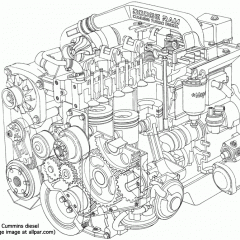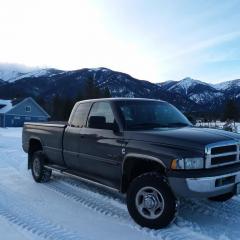- Replies 20
- Views 11k
- Created
- Last Reply
Top Posters In This Topic
-
sooxies 5 posts
-
Tractorman 5 posts
-
Haggar 3 posts
-
dripley 2 posts
Most Popular Posts
-
I have the kit made with a plunger type air compressor and I have in some cases with pressurized over flow tank vehicles cut the heater hose and installed a copper fitting between the hoses with a si
-
Soox, Too firm and almost firm etc etc are too subjective of statements. The reason the cap has a pressure setting is, its allowed to rise to that pressure and then be relieved, maintain
-
dont forget that a pressurized system will have a higher boiling point so that it wont "boil over". so at 220F its hotter then hell but it wont boil over while sealed up to the pressure max of the rad








Well onto the next item to fix...what appears to be a head gasket problem . I'm extremely certain that my issue is in fact a bad H.G. but I took a short video so you all can see what I see. The video was taken right after shutdown on a hot engine. What caught my attention, initially, was the upper radiator hose becoming quite firm upon squeezing it at operating temperature. For what it's worth, I had gotten some air into the system (changed the thermostat and radiator cap/went on a short drive up to operating temperature). I cant imagine these bubbles have anything to do with air being bled out on its' own? I did park the truck nose up and burped the system the best I could prior to my short trip. I pulled over when I saw the dash reading 190 and looked into the overflow tank and didn't see any bubbles? Maybe I didn't look long enough?
. I'm extremely certain that my issue is in fact a bad H.G. but I took a short video so you all can see what I see. The video was taken right after shutdown on a hot engine. What caught my attention, initially, was the upper radiator hose becoming quite firm upon squeezing it at operating temperature. For what it's worth, I had gotten some air into the system (changed the thermostat and radiator cap/went on a short drive up to operating temperature). I cant imagine these bubbles have anything to do with air being bled out on its' own? I did park the truck nose up and burped the system the best I could prior to my short trip. I pulled over when I saw the dash reading 190 and looked into the overflow tank and didn't see any bubbles? Maybe I didn't look long enough?
I've had coolant loss during my ownership of this vehicle (onto year 5 now). I flushed the system back in 2015 and my overflow tank went from the full mark to the add mark in these five years. I don't have any details other than that because that's all I can remember. For example, I cannot pin point a certain date when I noticed a significant loss of coolant. I discovered, in 2020, I had a leaking heater core which I replaced earlier this year (not sure how long that was leaking). Perhaps that had something to do with it as well.
At the current moment:
I have not been driving the truck very much because I don't want to make the problem much worse or get stranded. With that, I can't say unequivocally if the truck has been (lately) using coolant or not.
My biggest concerns now are the upper radiator hose being very firm and these bubbles which I now discovered. I can't tell if the lower hose is firm as well because of the spring inside of it.
I'm at 156.5K miles on the vehicle.
Thanks All!